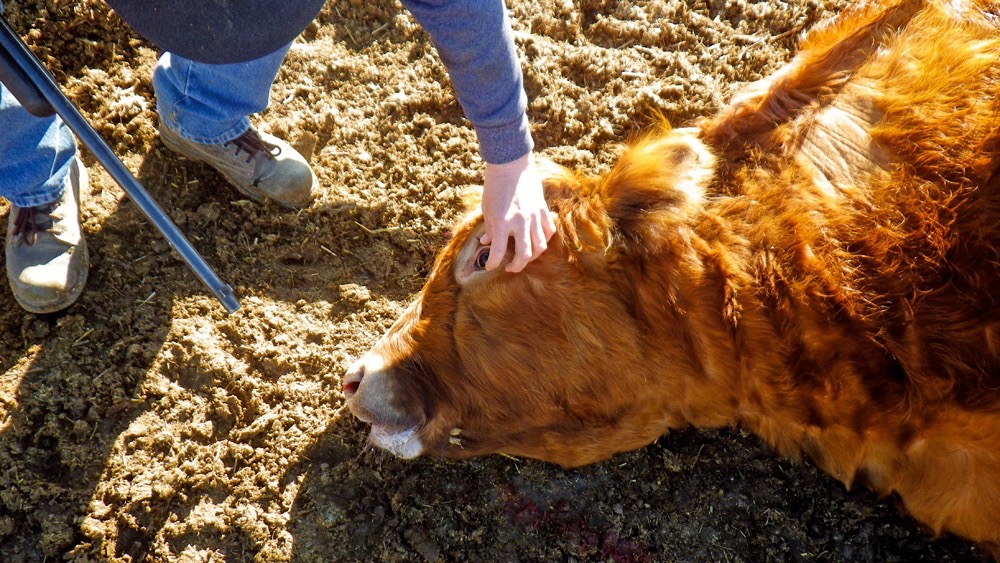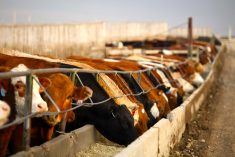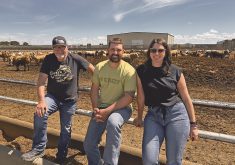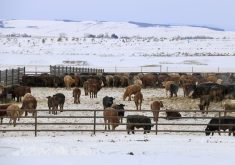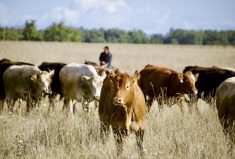Animal neglect generally brings to mind images of pets and farm animals lacking adequate feed, water and shelter. While these are serious acts of neglect, so too is trying too hard to keep failing animals alive.
The Canadian Feedlot Animal Care Assessment Program places “failing to euthanize a distressed animal in a timely manner” at the top of the list of egregious acts of neglect that are grounds for automatic failure of the animal care audit. Failing to euthanize emaciated chronically diseased or injured animals and ineffective euthanasia are also grounds for audit failure regardless of how well a feedlot scores on all other aspects of the audit.
Read Also

Body condition, nutrition and vaccination for brood cows
One of the remarkable events of the past century related to ranching has been the genetic evolution of brood cows….
Having a written protocol for euthanasia and salvage slaughter will help make the decisions easier.
The auditor will verify that your protocol includes the requirement to euthanize animals in a timely manner, meaning without delay unless otherwise recommended by your feedlot veterinarian, animals that:
- Are severely injured or non-ambulatory and unable to recover, or cannot be salvage slaughtered in a humane manner without delay, for example a broken leg or jaw.
- Are non-ambulatory and emaciated (body condition score less than two out of five).
- Have severe pain, distress or continuous weight loss and are unlikely to recover after all courses of treatment, for example, necrotic club foot with open infected wound or chronic respiratory disease with mouth breathing and emaciation.
- Have no prospect for improvement after two days of intensive care.
The euthanasia protocol must include requirements that non-ambulatory cattle must not be dragged or forced to move before euthanasia or emergency slaughter, and not moved until confirmed dead. Information should be provided on correct placement and direction of the gunshot or captive bolt as illustrated in the Beef Code of Practice, how to confirm insensibility and death (inability to raise head, widely dilated pupils, no blink when eyeball is touched, no respiration or heartbeat); and what to do if the first shot doesn’t render the animal insensible.
Effective euthanasia is when an animal is rendered dead immediately after the first shot. Acceptable devices include a penetrating captive bolt with a secondary kill step, 22 Magnum, shotgun and high-powered rifle. If death cannot be confirmed, a second shot must be immediately delivered to render the animal dead. Ineffective euthanasia is when an animal is not rendered dead after three shots with or without a secondary kill step or administration of euthanasia drugs by a licensed veterinarian.
Effective stunning for salvage slaughter requires that an animal be rendered insensible by gunshot or captive bolt and then rendered dead with a secondary kill step, such as jugular/carotid exsanguination, conducted by a licensed veterinarian or mobile butcher. Ineffective stunning occurs when an animal is not rendered insensible after the gunshot and dead after the secondary kill step.
Other egregious acts of neglect that result in automatic audit failure include failing to provide daily feed to cattle; provide timely assistance to a heifer known to be calving; assist a distressed newborn calf; immediately assist and provide medical care to a non-ambulatory animal; provide free-choice access to water to cattle in feeding pens; and provide water to non-ambulatory animals.
Among the wilful acts of abuse listed as grounds for automatic failure are:
- Dragging conscious animals by any part of the body except when a non-ambulatory animal must be moved from a life-threatening situation.
- Slamming gates against cattle unless for human safety.
- Deliberate application of prods to sensitive areas (face, udder, testicles, vulva, bum).
- Maliciously hitting animals anywhere on the body with a closed fist, foot, handling equipment, or other hard objects.
- Deliberately driving cattle by any means to cause them to bunch up on top of one another.
- Abdominal surgery (rumen fistula, C-section, spaying) and rectal/vaginal/uterine prolapse replacements with sutures or amputations performed without anesthetic or analgesia by unqualified, untrained persons.
- Euthanasia by means other than approved guns or euthanasia drugs given by a licensed veterinarian.
- Shipping cattle unfit for transport as per Canadian livestock transport regulations.
If a wilful act of neglect or abuse is witnessed, the auditor must immediately stop the situation if it is safely possible to do so, and report the incident to the feedlot guide, feedlot owner and manager.
This ends our series on the new Canadian Feedlot Animal Care Assessment Program. Contact your provincial cattle feeder association for the link to all program documents on the National Cattle Feeders Association’s website, or contact the NCFA, 403-769-1519, [email protected].


